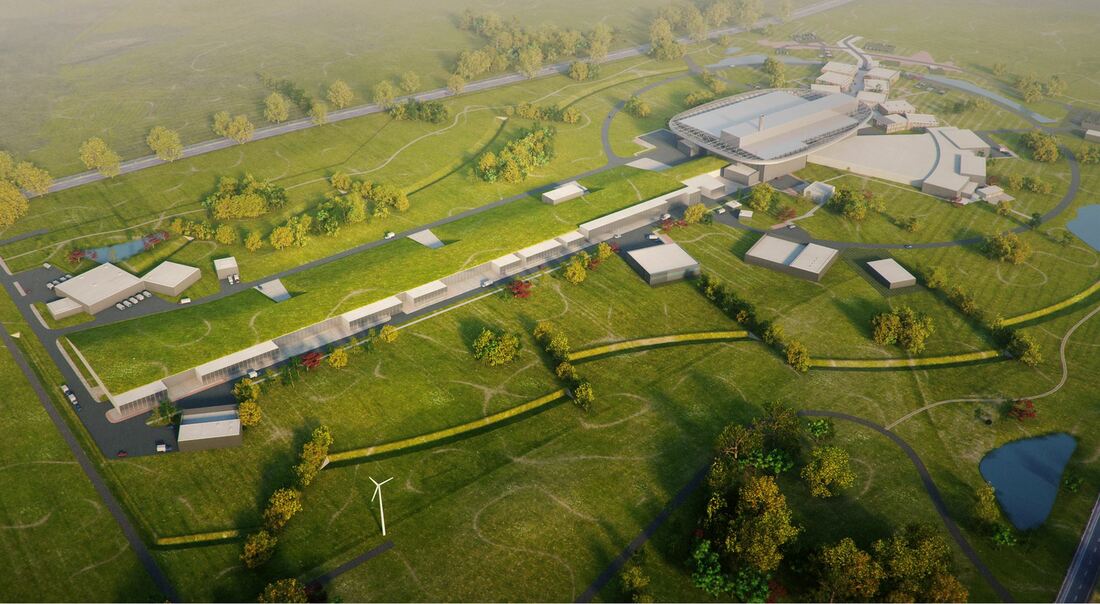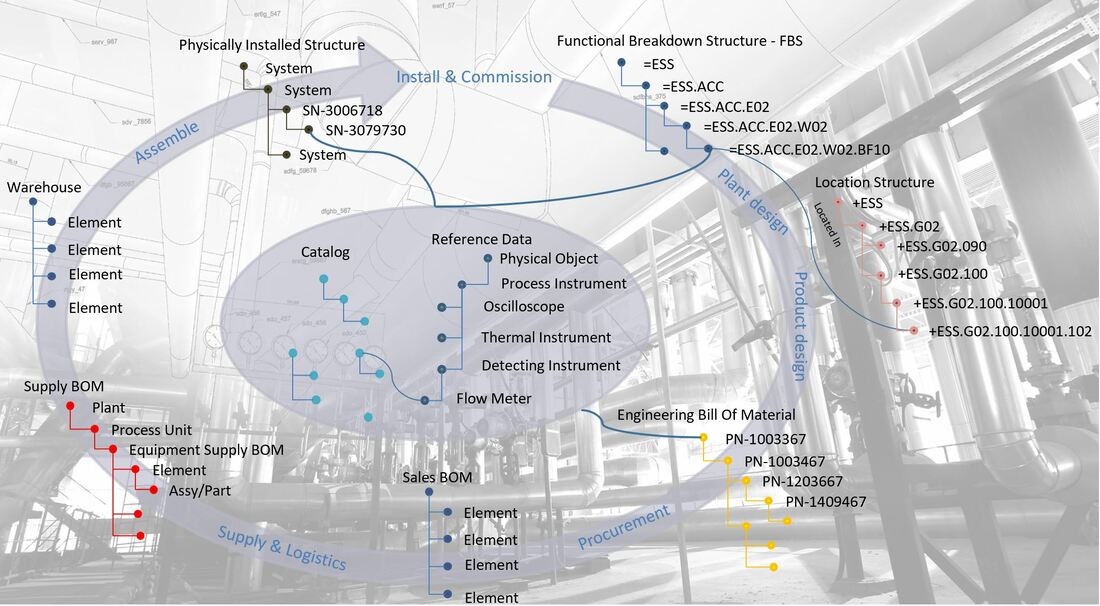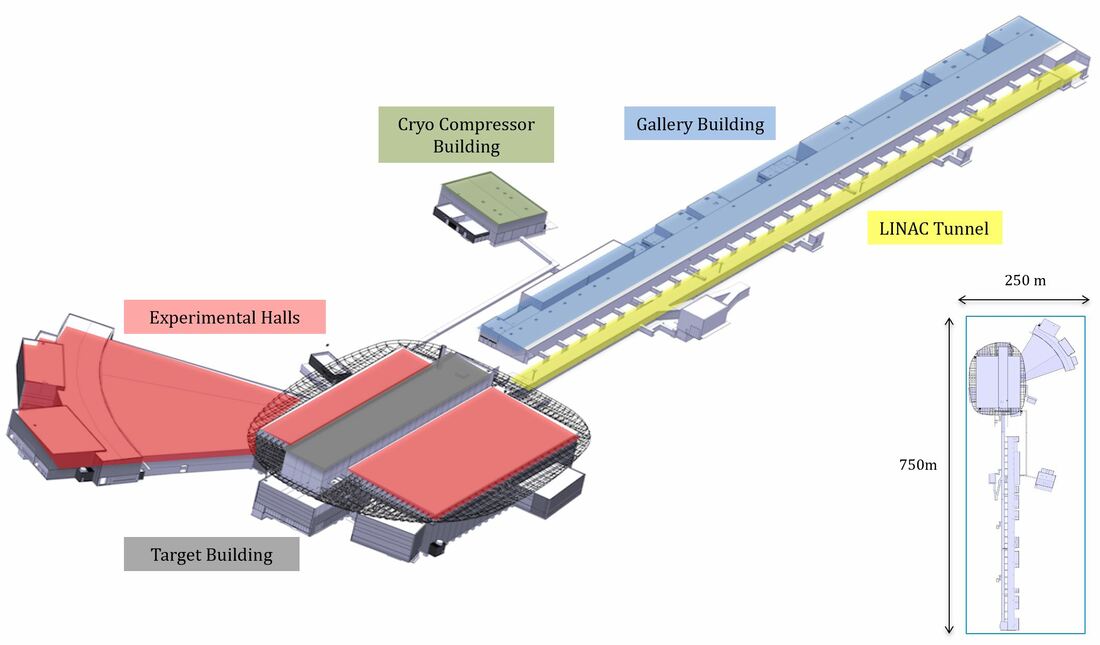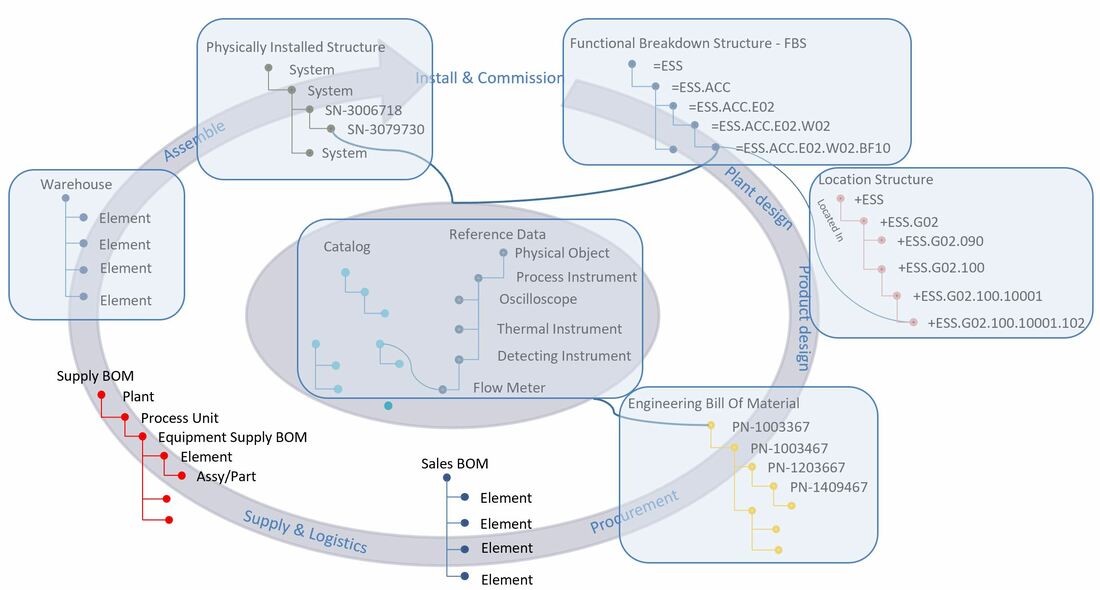Image courtesy of European Spallation Source ERIC
I’ve been asked on several occasions if I can share some more details from any of the projects I’ve been involved with. Especially the ones addressing plant lifecycle management and the use of structured data.
Naturally, most commercial companies who face fierce competition every day are reluctant to do so, as it is deemed highly important for their competitiveness. Or as one client put it “This is truly our backbone, while our master-data is our lifeblood”
I’ve been asked on several occasions if I can share some more details from any of the projects I’ve been involved with. Especially the ones addressing plant lifecycle management and the use of structured data.
Naturally, most commercial companies who face fierce competition every day are reluctant to do so, as it is deemed highly important for their competitiveness. Or as one client put it “This is truly our backbone, while our master-data is our lifeblood”
However, there is one very special company I’ve been fortunate to be involved with for several years now who has agreed to share some of their details.
It is the European Spallation Source ERIC or ESS for short. An organization tasked with executing a true mega-project, to design, build and operate the world’s brightest neutron source for scientific use.
So what is the European Spallation Source?
In short it is a 750 meters long and 250 meters wide facility that houses a huge linear proton accelerator or LINAC. The accelerator is responsible for accelerating protons produced by an Ion Source up to 96% of the speed of light. The protons are then collided into the target which is a 2.6 m-diameter stainless steel disk containing bricks of a neutron-rich heavy metal called Tungsten. This is where Spallation occurs, where neutrons are flung out from the target wheel. These neutrons are the main product of the European Spallation Source, and they are guided through neutron guides to the instruments that allow researchers to do their research. It is anticipated that 22 instruments will be installed in total.
For more information, check out europeanspallationsource.se
It is the European Spallation Source ERIC or ESS for short. An organization tasked with executing a true mega-project, to design, build and operate the world’s brightest neutron source for scientific use.
So what is the European Spallation Source?
In short it is a 750 meters long and 250 meters wide facility that houses a huge linear proton accelerator or LINAC. The accelerator is responsible for accelerating protons produced by an Ion Source up to 96% of the speed of light. The protons are then collided into the target which is a 2.6 m-diameter stainless steel disk containing bricks of a neutron-rich heavy metal called Tungsten. This is where Spallation occurs, where neutrons are flung out from the target wheel. These neutrons are the main product of the European Spallation Source, and they are guided through neutron guides to the instruments that allow researchers to do their research. It is anticipated that 22 instruments will be installed in total.
For more information, check out europeanspallationsource.se
Image courtesy of Fabien Rey, Group Leader Machine Engineering Service Group at European Spallation Source ERIC
What kind of research will be conducted?
Some examples are: chemistry of materials, magnetic & electronic phenomena, life science & soft condensed matter, engineering materials, geosciences, archeology & heritage conservation, fast neutron applications and particle physics
Well, back to the real question at hand. What have they done with respect to plant lifecycle management and technical information management?
If you want to freshen up on my views with respect to needed information structures, you may do so here:
Plant Information Management - Information Structures
Archive of articles
What ESS has put in place is truly remarkable. By extending a Product Lifecycle Management (PLM) system to also manage:
What kind of research will be conducted?
Some examples are: chemistry of materials, magnetic & electronic phenomena, life science & soft condensed matter, engineering materials, geosciences, archeology & heritage conservation, fast neutron applications and particle physics
Well, back to the real question at hand. What have they done with respect to plant lifecycle management and technical information management?
If you want to freshen up on my views with respect to needed information structures, you may do so here:
Plant Information Management - Information Structures
Archive of articles
What ESS has put in place is truly remarkable. By extending a Product Lifecycle Management (PLM) system to also manage:
- Functional Breakdown Structure (Tags)
- Location Breakdown Structure (Physical Locations)
- Engineering Bill of Material (EBOM for product designs, traditionally the home turf of a PLM system)
- Management of all installed assets or physically installed items (the front end for asset management and warehouse management is an Enterprise Asset Management system, whereas assets installed in the facility are also created and consolidated in the PLM system together with relationships to their corresponding Tag, Location, Part and their common reference data class with attributes)
In addition to the actual data structures, each object in any structure is governed by revision control and change management, not only of the objects themselves but also their associated specifications in the form of 3D design models, drawings, certificates and reports etc.
Why has the European Spallation Source done this when they are only building one such facility?
The main reason is to support the European Spallation Source evolution from project to a sustainable facility enabling world-leading science for ≥40 years, and to establish the foundation needed for future cost-efficient operation and maintenance.
A second reason is the fact that the facility in some areas is producing radiation in the form of radioactivity. This means that parts of the facility fall under the regulatory requirements of the Swedish Radiation Safety Authority which in turn means rigorous control of all technical information as well as configuration management of such information.
In the coming articles I will address each information structure, as well as the topics of digital twin, master reference data, change management and revision control with live examples from the European Spallation Source.
In this regard I would like to offer a special thanks to Peter Rådahl, Head of Engineering and Integration department at the European Spallation Source whom I’ve had the privilege to serve as an advisor for several years now. Peter Raadahl had a clear vision from the start on how to best serve the European Spallation Source with respect to managing technical information, formed a strategy for how to get there and stuck to the strategy through many an obstacle.
Bjorn Fidjeland
Why has the European Spallation Source done this when they are only building one such facility?
The main reason is to support the European Spallation Source evolution from project to a sustainable facility enabling world-leading science for ≥40 years, and to establish the foundation needed for future cost-efficient operation and maintenance.
A second reason is the fact that the facility in some areas is producing radiation in the form of radioactivity. This means that parts of the facility fall under the regulatory requirements of the Swedish Radiation Safety Authority which in turn means rigorous control of all technical information as well as configuration management of such information.
In the coming articles I will address each information structure, as well as the topics of digital twin, master reference data, change management and revision control with live examples from the European Spallation Source.
In this regard I would like to offer a special thanks to Peter Rådahl, Head of Engineering and Integration department at the European Spallation Source whom I’ve had the privilege to serve as an advisor for several years now. Peter Raadahl had a clear vision from the start on how to best serve the European Spallation Source with respect to managing technical information, formed a strategy for how to get there and stuck to the strategy through many an obstacle.
Bjorn Fidjeland





 RSS Feed
RSS Feed
